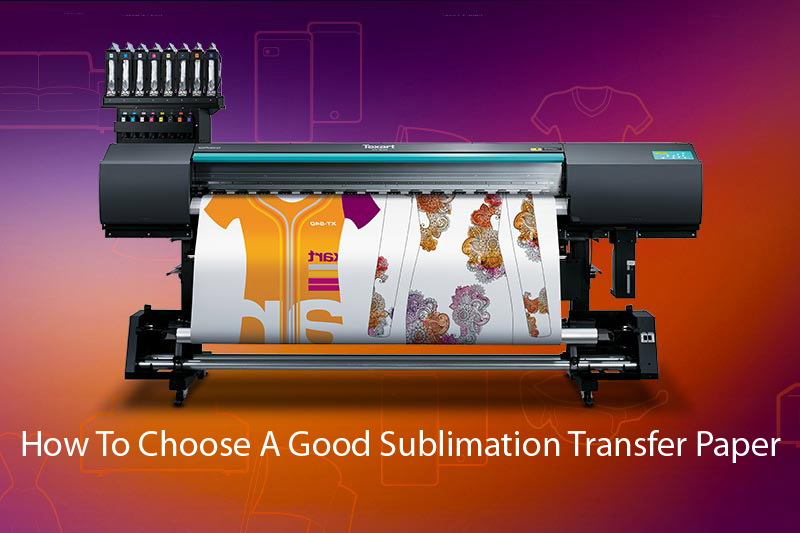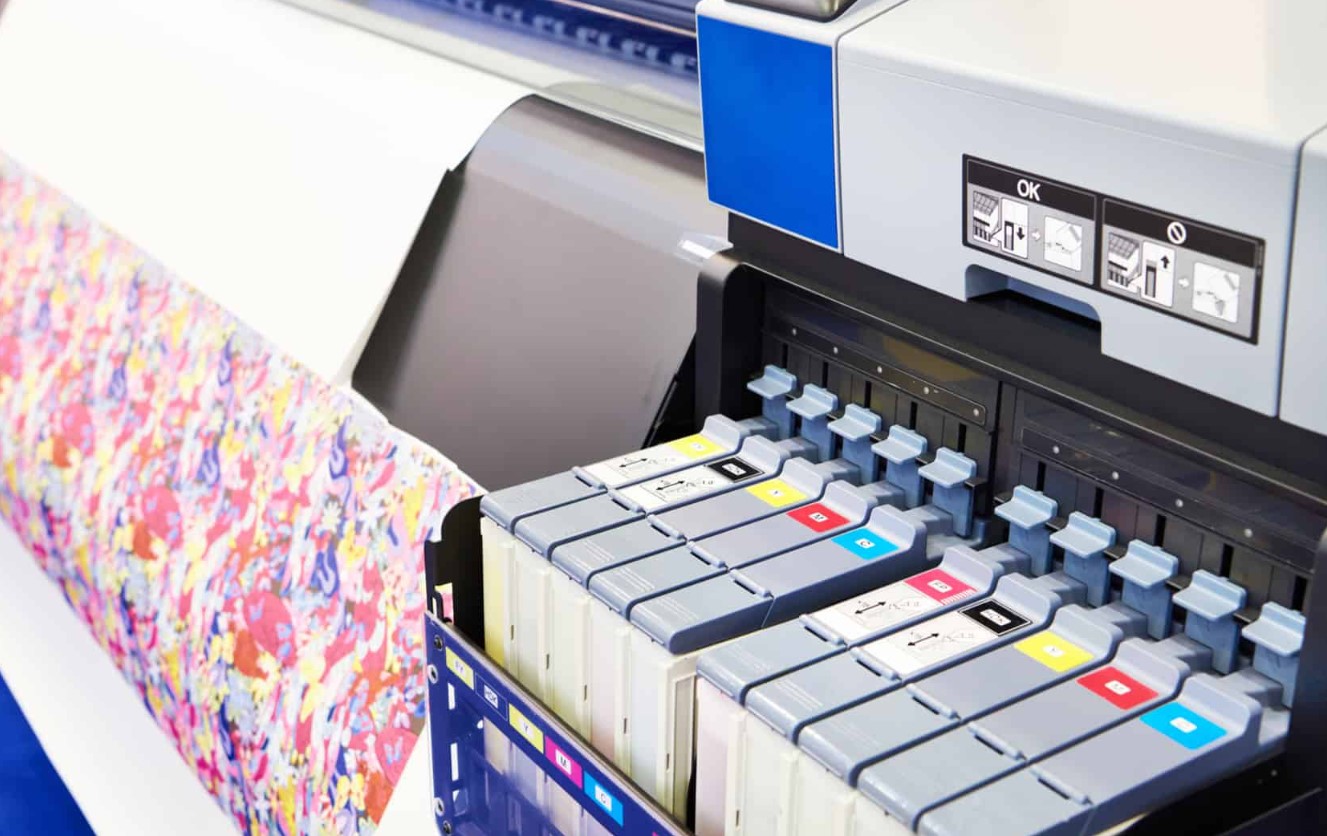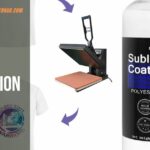Here is a guide about How To Choose A Good Sublimation Transfer Paper learn features you must consider before buying the perfect sublimation transfer paper for your customized sublimation printing.
Don’t we all just love buying customized little goodies for our friends and family! But have you ever wondered how this customization works? Well, this is done by sublimation printing. And guess what’s the best part, you can do this yourself too! Whether you’re doing it for yourself or for your friends or family, customized products are always the perfect gifts but you need to take care of some things to guarantee the process works out perfectly. One of these things is choosing the best sublimation transfer paper.

The sublimation transfer paper is basically the medium of transfer. It helps you shift the sublimation ink onto your desired product in the heat press. The kind of sublimation paper that you use in your printing process is very important for you to get your desired result of customization. To help you make the right decision when buying the best sublimation transfer paper here is a list of things you must consider before making the purchase.
How To Choose A Good Sublimation Transfer Paper
Transfer Rate
The first thing that you need to consider when choosing the transfer paper is looking into its transfer rate. This is one of the most important aspects according to which you should buy a specific brand of transfer paper. Transfer rate is the speed with which the paper transfers the ink onto your products’ material.
You can’t exactly determine the transfer rate for a transfer paper just by observing the time it takes to absorb the sublimation ink from the printer and then stamping it onto the product. However, some companies try out the printing process on a patch of paper under a specific set of conditions. Afterwards, the colour chromatic ratio is checked to give an estimate of the transfer rate.
Now of course the transfer paper taking the least time will be a more preferable one. There are many options in the market that give higher transfer rates. Higher transfer rates mean you will have to invest less time needed in the printing process itself. Some of the additional pros of the higher transfer rates include saving the quantity of ink that you are using. Hence it will be a more economical option for you in the long run.
Ink Compatibility
Another important aspect to consider before buying your paper is the quality of your ink. Different inks have different properties hence they require transfer papers with only the specific characteristics that can be compatible with these inks. Therefore make sure you carry out a little research and find the right kind of dye for your printing process before you purchase the paper. Only after you have done this can you shop for the most compatible option in the range of transfer papers.
One of the things to focus on for understanding the compatibility of the ink with the paper is to check its ink limit. Some inks are wetter than others. In this case, you need to use heavier paper that can easily absorb this ink without curling up or tearing it. Similarly, also consider the densities of inks used in a complex design. Some designs require heavier ink in one part but lighter in the other. In this case, the paper should be about 110gsm so that it can accommodate these different inks at once.
If you’re looking for the best customization results then you should opt for both high qualities of the dye as well as the transfer paper. This will guarantee you a vibrant and clearer print on your products without any warping or disturbance.
Drying Rate
We’ve already talked about the transfer rate of the paper. However, speed in terms of transferring process is not the only important thing to consider. In fact, another one of the important aspects to consider is the drying time of the paper as well. The time that a paper takes to dry out the ink after you have transferred it is also very essential.
You should always look for a transfer paper that comes with a good reputation in terms of its drying time. The quicker a transfer paper dries the ink the better option it is. When the transfer paper quickly dries the ink it leaves it less time to smudge. Hence this reduces the chance of messing up the design once the printing process is complete and it is easier and much more fun to work with such convenient products.
Until now there is no specific method by which you can exactly tell the drying rate of a transfer paper. However, currently, some companies use the surface hygrometer method. This helps give a rough estimate of what the drying capabilities of the transfer paper are.
Impurity Spots On Paper
Impurity spots as the name shows give you a measure of the quality of the transfer paper. The quantity of these spots is what actually gives you insight into the quality of the paper. They appear on the base of the paper during the process of their production or the coating process.
As a result of uneven coverage, some of the patches on this paper may be having some blank white spots that can potentially be harmful to the printing process. This is because the ink does not adhere to these patches. Although this won’t be a problem for most designs having colorful patterns. However, for a single colour, the large spots may be an issue. Therefore while looking for your transfer paper always choose the ones that have lesser impurity spots.
See-Through Situation
Sometimes if the transfer paper is too thin you may be able to see through it. This means that there is a greater penetration phenomenon, therefore, the ink easily transfers from the surface through the coating and onto the base. Now the general idea to determine this situation is using the naked eye. You can observe it directly to tell which paper has a more see-through appearance and which one does not. Other than that no such method has been determined that can digitally give you a clear result as to what the penetration condition of the paper actually is.
Paper Flatness
Paper flatness is another feature to consider in your transfer paper. The flatness of the transfer paper directly affects how your print will turn out to be after the sublimation process. In case you buy a paper that has bad flatness or which is not flat enough, this will cause increased friction. This increased friction ruins your customization process first of all. But apart from that when the paper comes in contact with the inkjet head of the inkjet printer, it can potentially damage the nozzle. This means that ultimately the printing equipment will have a decreased lifetime.
What you need to be looking for is a paper having a good flatness. This is because this kind of paper will provide a smooth canvas for the printing process. This will be controlled for up to 3 seconds and will not affect the quality of the nozzle or any other printing equipment used in the process.
Warpage Angle
Now as we mentioned earlier, transfer paper is a paper that comes with a certain coating. During the coating process, the manufacturer needs to ensure consistent coating. In case there is no consistency in this process this will lead to the issue of inconsistent drying of different parts of the transfer paper. For example, a lower temperature will dry out the base earlier than the coating, etc.
All these issues ultimately impact the printing process leading to a number of defective operations. This includes the inconvenience of entering the paper into the printer. Sometimes this can also lead to thermal transfer failure due to the inability of the warped page to fit the exact position of the paper. Moreover, this can also lead to dislocation transfer failure where the transfer paper will roll with the warped portion of the paper.
Stability of Quality
Lastly and in my opinion the most important aspect to determine the quality of the transfer paper is to examine the consistency of its quality. If the paper works accurately on one side of the product but tends to overlap or blur out on another it cannot be considered fit for the job. Similarly fixing this and completing the design will take much more time than is actually required, costing you more time as well as money. Therefore you must opt for the transfer paper that is easier to use and has a good reputation for being consistent in its performance.
FAQs
What is the best paper to use for sublimation?
AccuPlot and Beaver TexPrint are some of the well-known brands for sublimation papers that are most preferable for a good sublimation printing procedure.
What is the difference in sublimation paper?
Sublimation is a unique process of printing by which the dye does not just lie on top of the fabric. In fact, it becomes a part of the fabric which is much more durable than other similar processes.
Can you reuse sublimation paper?
After using sublimation paper once you may observe that it has leftover ink. However this will not be enough to give you another perfect print, hence it cannot be reused.
Wrapping Up
I’m pretty sure that by now you know everything about sublimation transfer papers and how you can find the best sublimation printer and papers one for yourself. So what’s the wait? Go shopping right now and keeping in mind all these tips, make sure you find the perfect product for yourself. Not only are you going to get some amazing customized goodies but in fact, you’ll also be learning an amazing new skill. So best of luck and happy printing!







